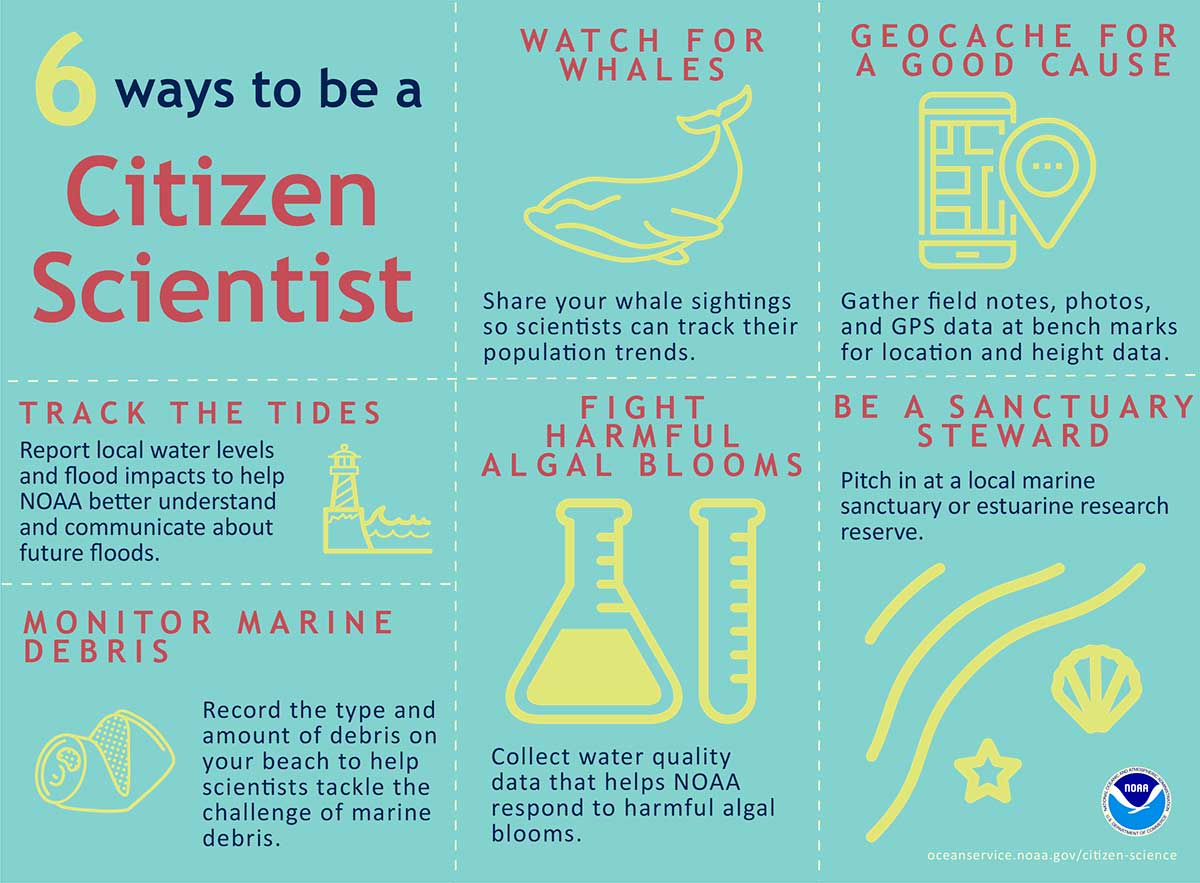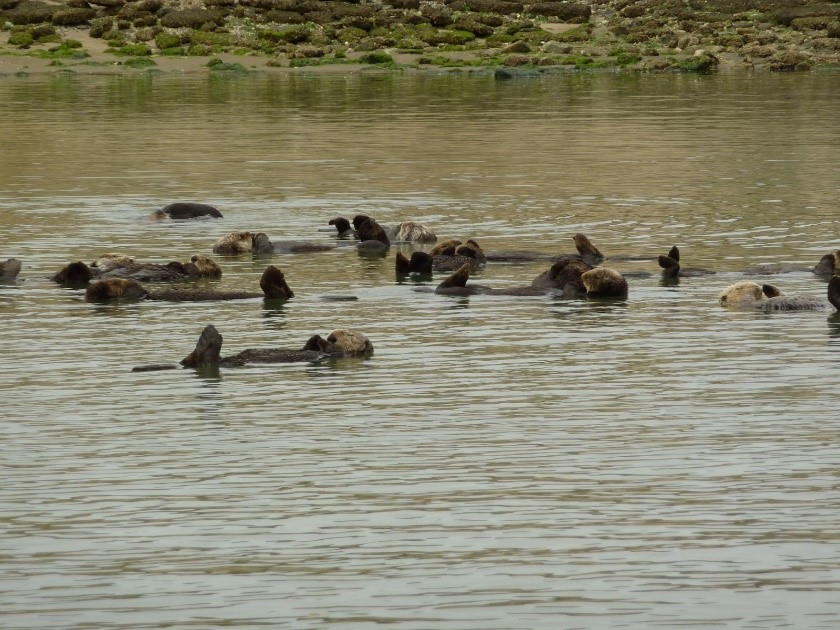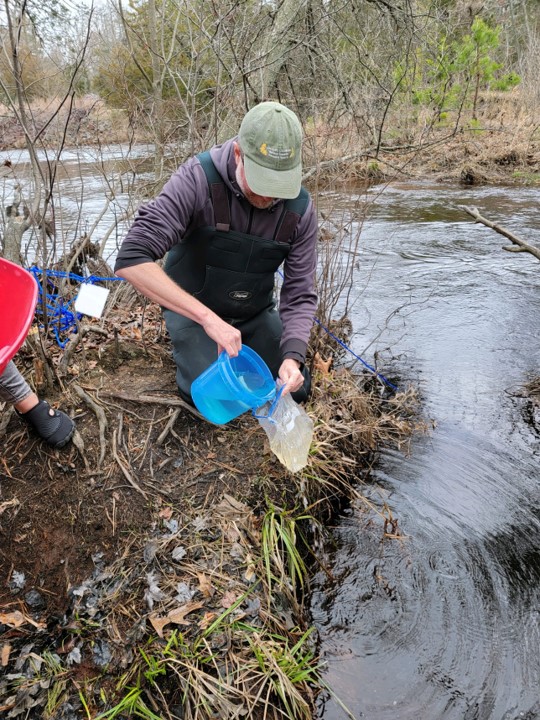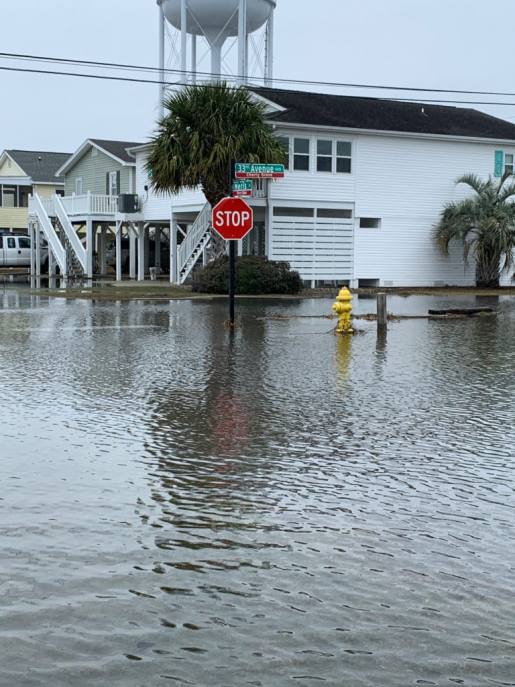NOAA Cheers Citizen Scientists
The Takeaway: These coastal volunteers walk the talk of science and stewardship by gathering data to help ecosystems remain vibrant and communities grow more resilient.

Expanding federal opportunities for quality citizen science projects carries an upside for virtually everyone involved, according to the 2021 NOAA Citizen Science Strategy. It can bolster research findings and innovation in a cost-effective way, often by providing memorable field experiences in science, technology, engineering, and math.

Photo credit: Elkhorn Slough Reserve
NOAA has been reaping the rewards of citizen science for quite a while through the work of its National Estuarine Research Reserve System and National Coastal Zone Management Program. Let’s take a look at some examples in the field.
Observing creatures in their habitat


Photo credit: Jacques Cousteau Research Reserve
- In California: Elkhorn Slough has the highest concentration of southern sea otters on the California coast, and their behaviors here differ from otters in other places. Citizen scientists and Elkhorn Slough Research Reserve staff members who observe these creatures over time have been rewarded with amazing sights, like this otter mom grooming her pup.
- In Rhode Island: In March 2022, volunteers traversed Narragansett Bay’s lands and waters to count 464 harbor, gray, harp, and hooded seals, providing invaluable observations for researchers of these top predators. The effort, supported by the Narragansett Bay Research Reserve and U.S. Environmental Protection Agency, has accumulated data for 13 straight years—see the latest Save the Bay report here.
- In Delaware and New Jersey: Experts with the Delaware Research Reserve have accompanied volunteers to count spawning horseshoe crabs on two state coasts for decades, tallying more than 42 million of this species to date. These animals are a keystone species for the ecosystem, and they contain important biomedical properties. Watch citizen scientists on a moonlight mission here.
Documenting plastic pollution

Photo credit: South Carolina Department of Health and Environmental Control
- In Texas: Since 2018, volunteers with the Nurdle Patrol, founded by the Mission-Aransas Research Reserve, have combed shoreline and nearshore areas to count and properly dispose of hundreds of thousands of these polluting plastic pellets. Their evidence was used to help reach an unprecedented $50 million settlement of a Clean Water Act lawsuit. The Nurdle Patrol has also expanded into a national network, and into Mexico.
Recording coastal conditions for better-informed decisions
- In South Carolina: State residents use the nonprofit crowdsourcing app mycoast.org to document beach cleanups and submit place-based images of storm damage, abandoned boats, and flooding from king tides. The South Carolina Department of Health and Environmental Control’s Office of Ocean and Coastal Resource Management supported the effort.
- In New Jersey: This state’s citizen scientists snap local flood images that inform the interactive NJFlood Mapper and My Coast: New Jersey. These successes are made possible by the Jacques Cousteau Research Reserve and Rutgers University. (Data from the Digital Coast’s Coastal Flood Exposure Mapper informed the New Jersey mapper.)
View this site to learn more about the federal government’s citizen science catalog, toolkit, and other resources. (2022)
Partners: California Department of Fish & Wildlife, Delaware Research Reserve, Elkhorn Slough Research Reserve, Jacques Cousteau Research Reserve, Delaware Research Reserve, Mission-Aransas Research Reserve, Narragansett Bay Research Reserve, New Jersey Department of Environmental Protection, Rutgers University, Save the Bay, South Carolina Department of Health and Environmental Control’s Office of Ocean and Coastal Resource Management, U.S. Environmental Protection Agency
Infographic Text: 6 Ways to Be a Citizen Scientist
- Track the Tides: Report local water levels and flood impacts to help NOAA better understand and communicate about future floods.
- Monitor Marine Debris: Record the type and amount of debris on your beach to help scientists tackle the challenge of marine debris.
- Watch for Whales: Share your whale sightings so scientists can track their population trends.
- Fight Harmful Algal Blooms: Collect water quality data that helps NOAA respond to harmful algal blooms.
- Geocache for a Good Cause: Gather field notes, photos, and GPS data at bench marks for location and height data.
- Be a Sanctuary Steward: Pitch in at a local marine sanctuary or estuarine research reserve.